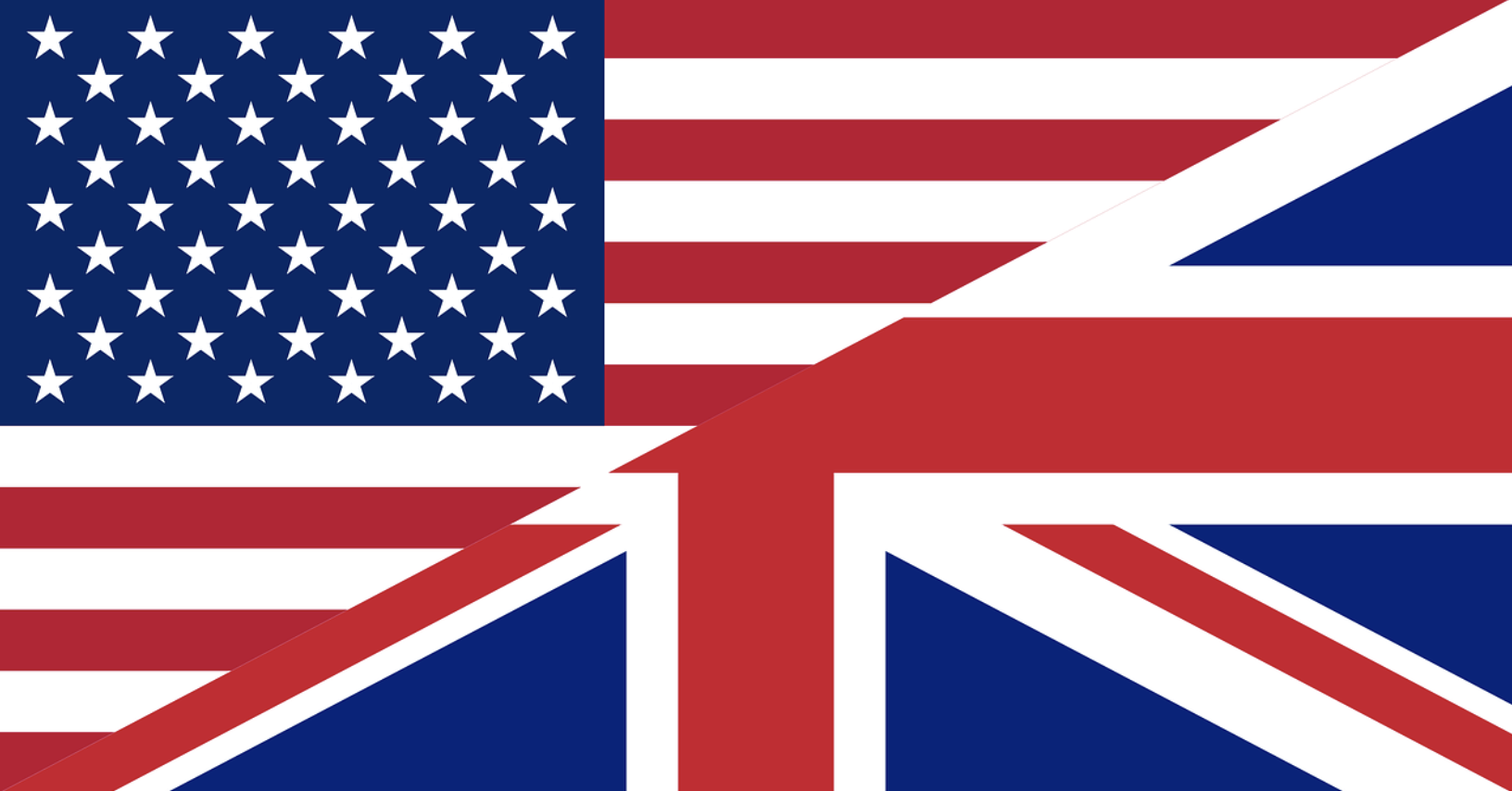UK vs. US PR: Three Things Every Startup and Scale-up Should Know Before Entering the US Market
Oct. 17, 2023
The U.S. and the U.K. share a common language, but the similarities between PR in the two countries often stop at the border. U.K. companies — and equally, European companies — looking to enter the U.S. market often find it more difficult than expected — especially as it relates to PR and marketing.
Foreign companies who want to start PR in the U.S. market often take one of two approaches:
Build out their existing PR programs to include the U.S. market, often with the same or only slightly altered messaging and strategy, or
Treat U.S. PR as an entirely separate project with its own audience, strategy, messaging, budget, news pipeline and content.
Based on 20+ years of experience (including multiple years spent working for the Financial Times in the U.S. market), the second approach typically yields better results. Sure, Americans and Brits share a common language, but there’s a plethora of differences between the two audiences – whether enterprise or consumer.
Most PR practices are similar, no matter where they’re located. There’s always a need to forge relationships with journalists and tell a strong story, but there are also key differences that must be understood in order to succeed in the U.S. Here are three things British startups and scale-ups should evaluate before implementing a U.S. PR program in the U.S.:
1. Budget.
U.S. PR is more expensive. There are many reasons why, but chief among them is the sheer size of the market (the U.S. population is 330M+) and the press that covers it. Depending on the industry and target audience, the media landscape can be anywhere from five to 10 times bigger in the U.S. than in the U.K. or other European markets. Expenses go up if you want comprehensive PR that includes expanded media relations (awards and speaking opportunity placements, podcast placements) content marketing (op-eds and placement), analyst relations, influencer relations, social media or more. It’s not uncommon for PR firms in the U.S. to charge from $10K to $30K+ per month depending on the scope of work.
The adage ‘you get what you pay for’ applies in the U.S., where things are constantly shifting. Reporters change publications and beats frequently and media outlets down-size and up-size quickly. As a result, PR professionals in the U.S. must work 10 times harder than their British counterparts to achieve results, rise above the noise and ensure companies, products and executives are top of mind with the right journalist at the right publication at the right time.
2. Timeline.
A common mistake many foreign companies who are looking to increase PR activity in the U.S. market make is failing to appreciate the timeline required to get news in front of the right sources. The news cycle is constantly in flux and evolving. U.S. journalists are inundated with press releases, pitches and breaking news. Additionally, many journalists are tasked with writing about trending topics related to everything from politics to social justice to natural disasters. Editorial staff numbers continue to shrink, and most reporters have to churn out a higher number of stories at an increased rate and cover more subject matters.
The best thing companies can offer journalists, beyond the story and assets, is flexibility — and the proper amount of time to research, write and file the story. A typical news announcement needs a minimum of a two-week window to pitch — and even more, if you’re working to secure an exclusive. One of the easiest ways to get on a journalist’s bad side is to send them news with no advance warning in the midst of a busy news cycle. Paying close attention to news cycles in the U.S. matters — and working around them shows a PR firm’s knowledge of the market. The U.S. appreciates not being pitched, for example, when they are at DreamForce or covering Apple, Meta or Google’s fall reveal events.
3. U.S. Media Are Notoriously U.S.-Centric.
Stories that are of interest to U.S. reporters and their readers can differ greatly in the U.S. vs. the U.K., — and equally, so can the requirements to secure a good story placement. U.S. reporters are highly US-centric. Unless their news beat requires that they write about international happenings, they tend to prefer a very sharp US angle. Products and services must be available to U.S. customers. Customer references and proof points should also be U.S.-based. Messaging should resonate with a U.S. audience and be written in American English — and not the King’s English.
U.S. media are also super keen on data, and in particular, proprietary data they can’t get anywhere else. They also require that all media assets necessary to tell a story – whether it’s product images, video and data or customer references and spokespeople – be available to them in the time window they need. U.S. journalists are also highly skeptical by nature. One of the quickest ways to cause lasting damage to your brand perception with the U.S. media is to promise a source and fail to deliver it.
The U.S. market is ripe for companies looking to scale up and grow their audience and overall market share. Companies who (wrongly) assume they can simply hop across the pond and communicate the same message is the wrong way to approach PR in the U.S., but for those who are willing to invest the right resources and time, the U.S. market harbors immense possibilities — and continues to be a place where many foreign companies find their acquisition or go on to IPO.
Looking for a nimble PR agency that has deep cross-border experience? Drop us a line – our team all-senior team of PR professionals is multi-lingual and global. hello@wearemgp.com

Content Director
UK vs. US PR: Three Things Every Startup and Scale-up Should Know Before Entering the US Market
Oct. 17, 2023
The U.S. and the U.K. share a common language, but the similarities between PR in the two countries often stop at the border. U.K. companies — and equally, European companies — looking to enter the U.S. market often find it more difficult than expected — especially as it relates to PR and marketing.
Foreign companies who want to start PR in the U.S. market often take one of two approaches:
Build out their existing PR programs to include the U.S. market, often with the same or only slightly altered messaging and strategy, or
Treat U.S. PR as an entirely separate project with its own audience, strategy, messaging, budget, news pipeline and content.
Based on 20+ years of experience (including multiple years spent working for the Financial Times in the U.S. market), the second approach typically yields better results. Sure, Americans and Brits share a common language, but there’s a plethora of differences between the two audiences – whether enterprise or consumer.
Most PR practices are similar, no matter where they’re located. There’s always a need to forge relationships with journalists and tell a strong story, but there are also key differences that must be understood in order to succeed in the U.S. Here are three things British startups and scale-ups should evaluate before implementing a U.S. PR program in the U.S.:
1. Budget.
U.S. PR is more expensive. There are many reasons why, but chief among them is the sheer size of the market (the U.S. population is 330M+) and the press that covers it. Depending on the industry and target audience, the media landscape can be anywhere from five to 10 times bigger in the U.S. than in the U.K. or other European markets. Expenses go up if you want comprehensive PR that includes expanded media relations (awards and speaking opportunity placements, podcast placements) content marketing (op-eds and placement), analyst relations, influencer relations, social media or more. It’s not uncommon for PR firms in the U.S. to charge from $10K to $30K+ per month depending on the scope of work.
The adage ‘you get what you pay for’ applies in the U.S., where things are constantly shifting. Reporters change publications and beats frequently and media outlets down-size and up-size quickly. As a result, PR professionals in the U.S. must work 10 times harder than their British counterparts to achieve results, rise above the noise and ensure companies, products and executives are top of mind with the right journalist at the right publication at the right time.
2. Timeline.
A common mistake many foreign companies who are looking to increase PR activity in the U.S. market make is failing to appreciate the timeline required to get news in front of the right sources. The news cycle is constantly in flux and evolving. U.S. journalists are inundated with press releases, pitches and breaking news. Additionally, many journalists are tasked with writing about trending topics related to everything from politics to social justice to natural disasters. Editorial staff numbers continue to shrink, and most reporters have to churn out a higher number of stories at an increased rate and cover more subject matters.
The best thing companies can offer journalists, beyond the story and assets, is flexibility — and the proper amount of time to research, write and file the story. A typical news announcement needs a minimum of a two-week window to pitch — and even more, if you’re working to secure an exclusive. One of the easiest ways to get on a journalist’s bad side is to send them news with no advance warning in the midst of a busy news cycle. Paying close attention to news cycles in the U.S. matters — and working around them shows a PR firm’s knowledge of the market. The U.S. appreciates not being pitched, for example, when they are at DreamForce or covering Apple, Meta or Google’s fall reveal events.
3. U.S. Media Are Notoriously U.S.-Centric.
Stories that are of interest to U.S. reporters and their readers can differ greatly in the U.S. vs. the U.K., — and equally, so can the requirements to secure a good story placement. U.S. reporters are highly US-centric. Unless their news beat requires that they write about international happenings, they tend to prefer a very sharp US angle. Products and services must be available to U.S. customers. Customer references and proof points should also be U.S.-based. Messaging should resonate with a U.S. audience and be written in American English — and not the King’s English.
U.S. media are also super keen on data, and in particular, proprietary data they can’t get anywhere else. They also require that all media assets necessary to tell a story – whether it’s product images, video and data or customer references and spokespeople – be available to them in the time window they need. U.S. journalists are also highly skeptical by nature. One of the quickest ways to cause lasting damage to your brand perception with the U.S. media is to promise a source and fail to deliver it.
The U.S. market is ripe for companies looking to scale up and grow their audience and overall market share. Companies who (wrongly) assume they can simply hop across the pond and communicate the same message is the wrong way to approach PR in the U.S., but for those who are willing to invest the right resources and time, the U.S. market harbors immense possibilities — and continues to be a place where many foreign companies find their acquisition or go on to IPO.
Looking for a nimble PR agency that has deep cross-border experience? Drop us a line – our team all-senior team of PR professionals is multi-lingual and global. hello@wearemgp.com

















